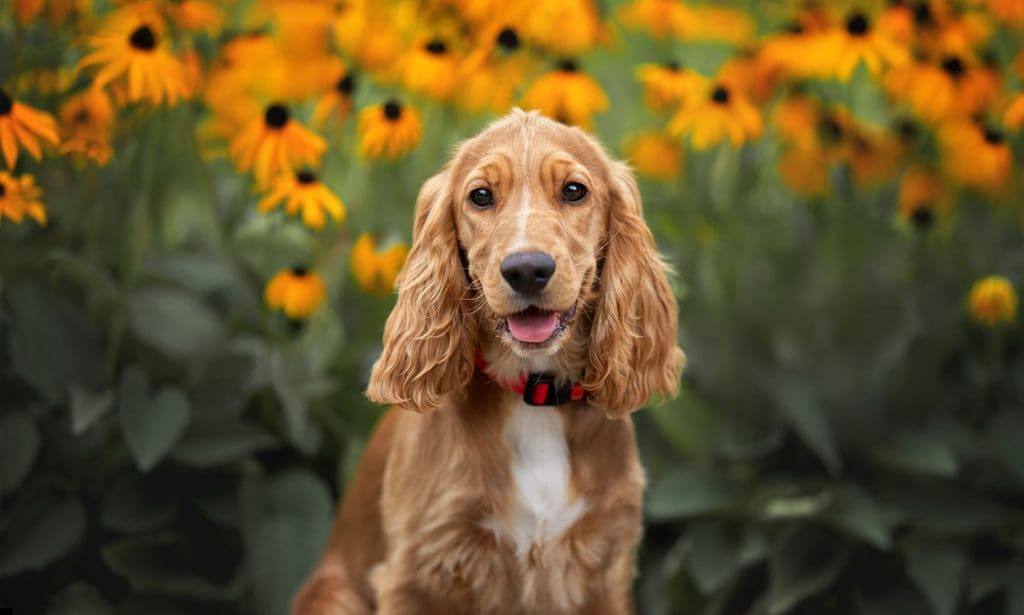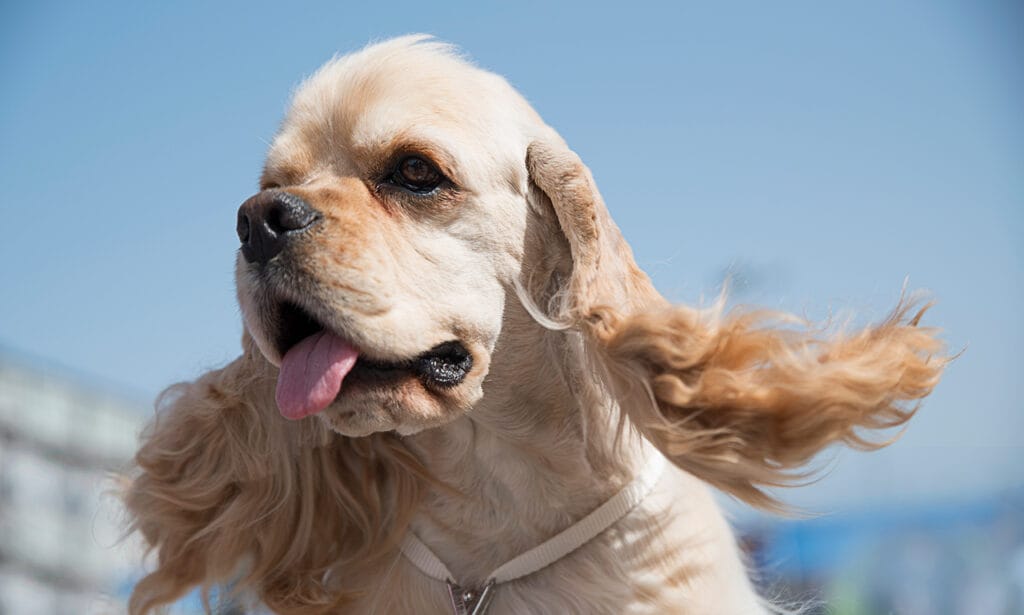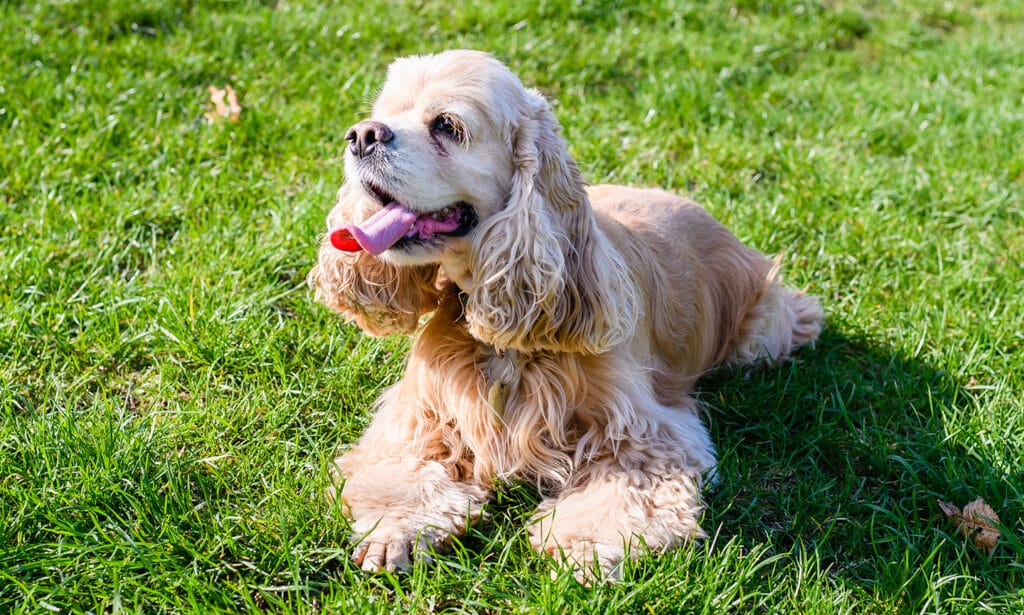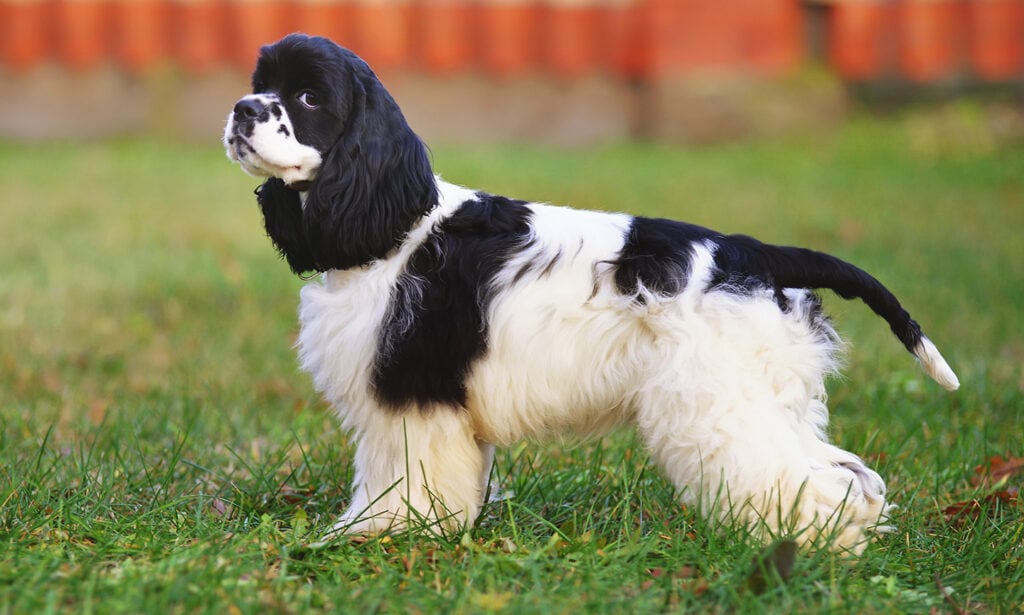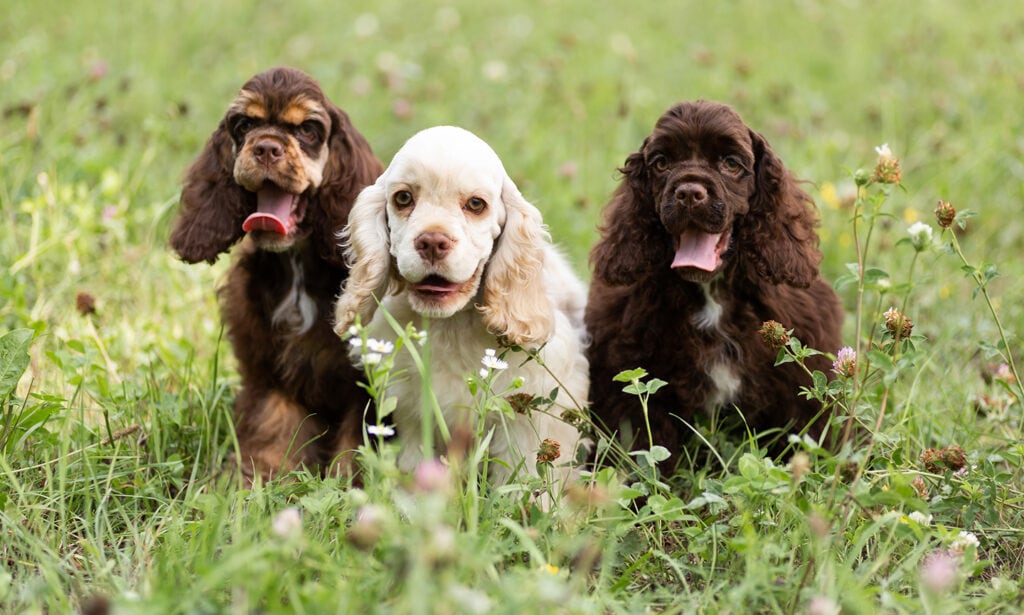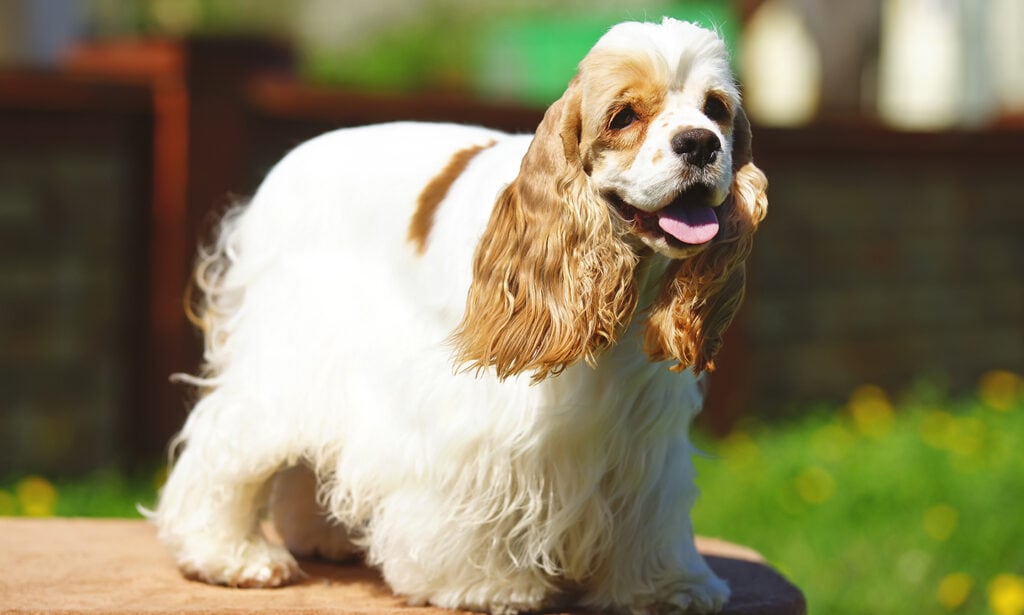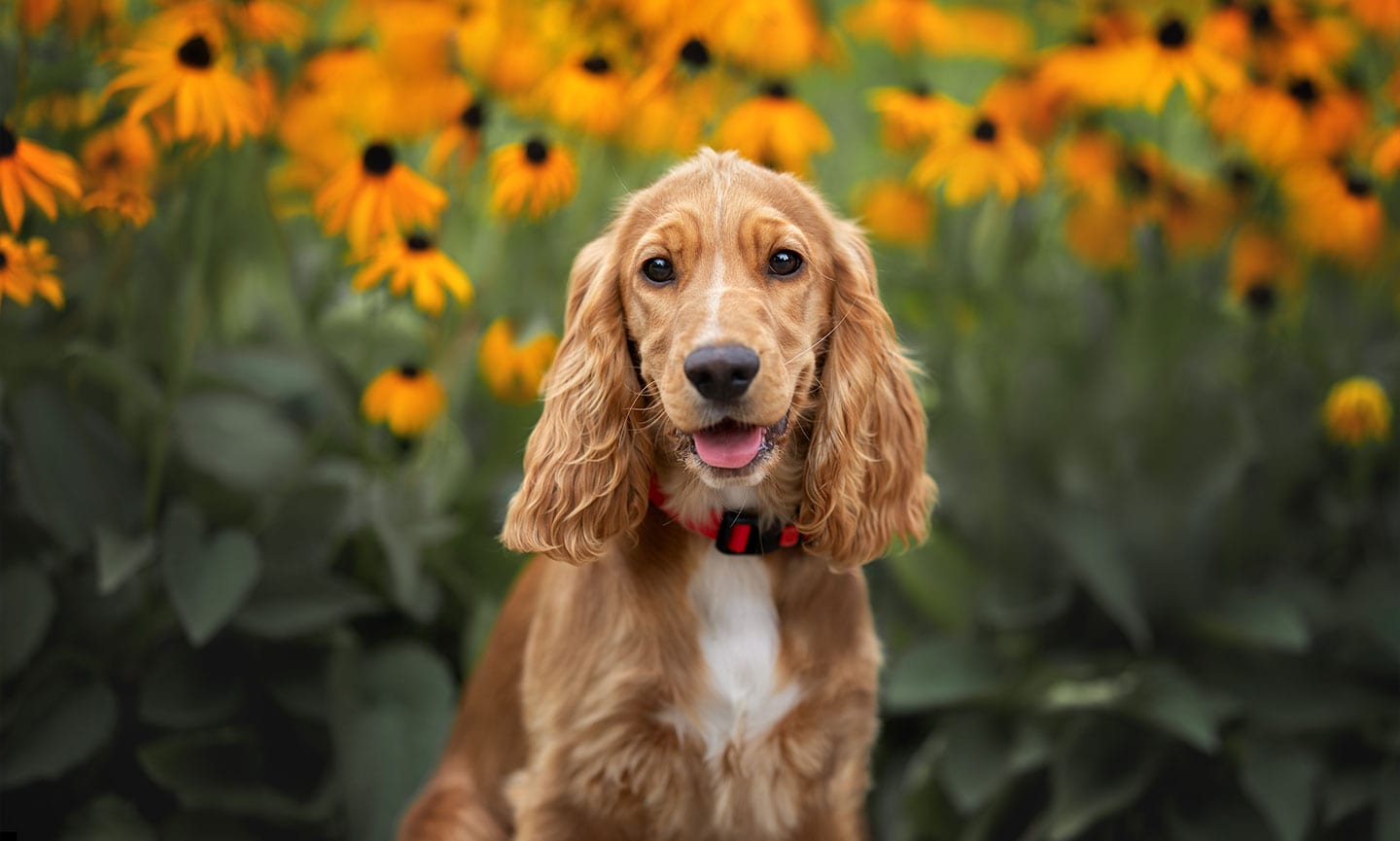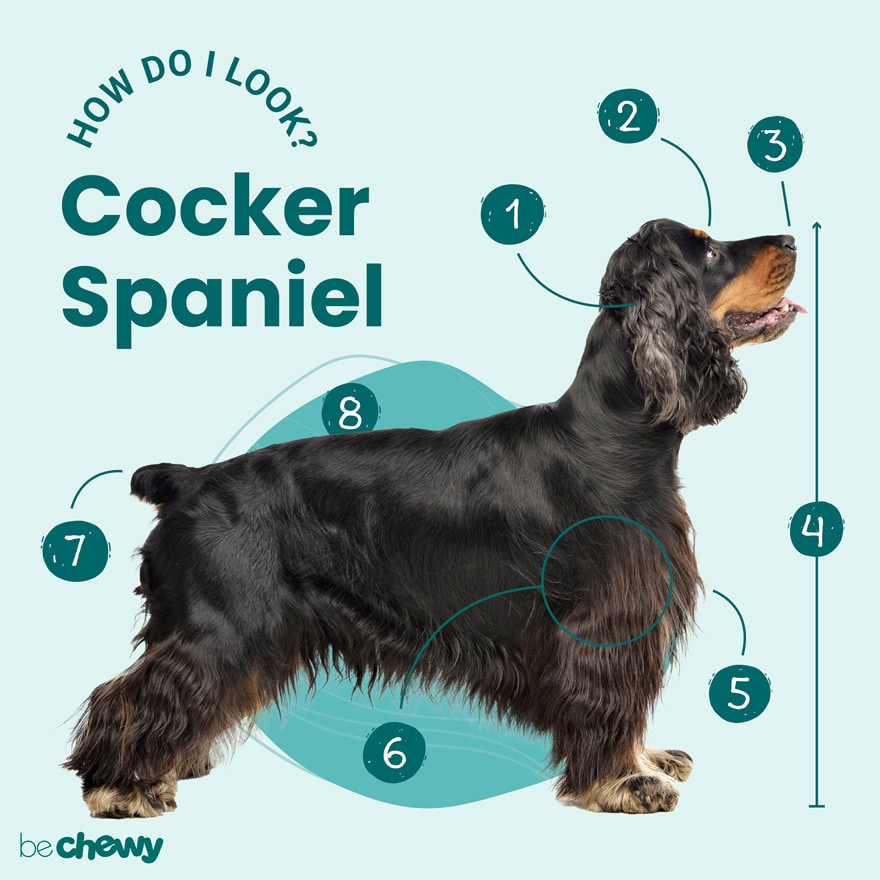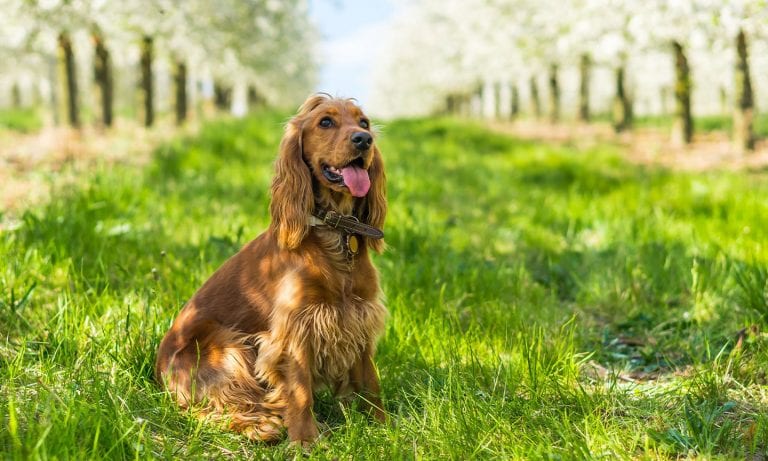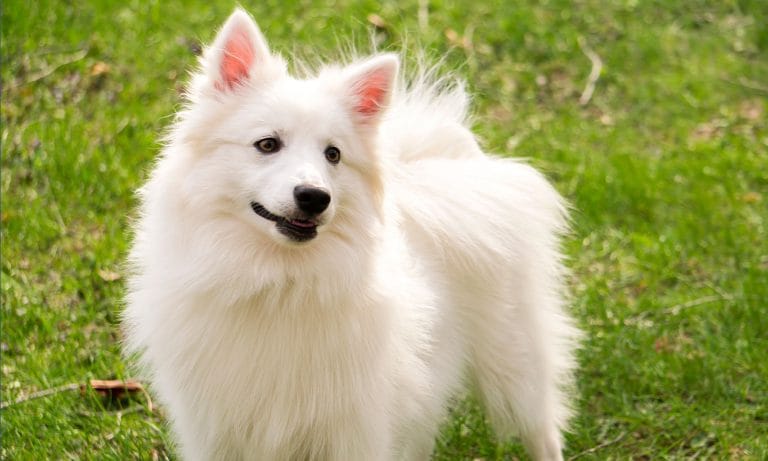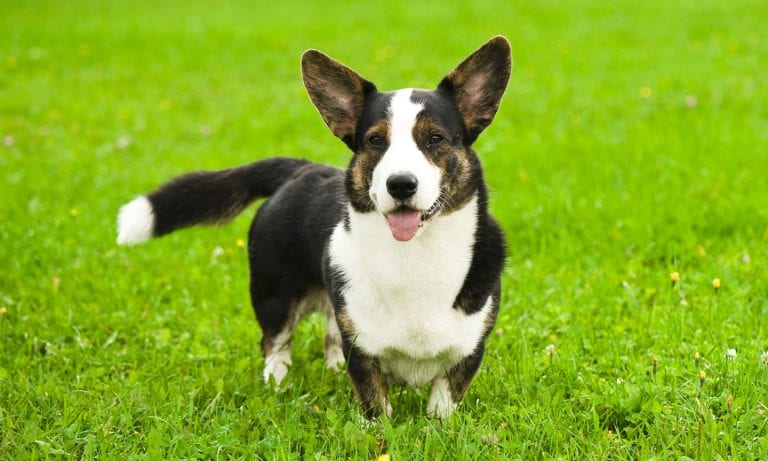The Cocker Spaniel might best be summed up in this quote from Shakespeare’s “A Midsummer Night’s Dream”: “Though she be but little, she is fierce.” A small dog, the Cocker Spaniel looks prim and proper with their fabulous flowing locks, but this adorable pint-sized breed is more rough-and-tumble than you may think. Cocker Spaniels were bred to hunt, so you might find yourself getting familiar with an agility course or signing up for a local flyball team. Still, they do enjoy their downtime. Translation: Life with your Cocker Spaniel will be filled with fun adventures and plenty of snuggle sessions in between. It really is the best of both worlds.
Breed Snapshot
Temperament:
Ready To PlayEasy To TrainAdaptableCoat Color:
BlackBlack And TanSilverBuffRedBrownBrown And TanBlack And WhiteRed And WhiteBuff And WhiteBrown And WhiteBlack White And TanBrown White And TanBrown RoanBrown Roan And Tan
Best For
Affectionate and adaptable dogs, Cocker Spaniels thrive in lively homes (whether large or small) and with pet parents who can offer companionship, regular exercise and extra time tending to their pup's fabulous silky coat. Consistent care and attention contribute to a happy Cocker Spaniel.
Cocker Spaniel Temperament
Cocker Spaniels are generally happy dogs who get along with most two- and four-legged friends. This makes them a great companion for families with kids and babies or other pets. Some Cocker Spaniels make good therapy dogs, too, but it will depend on your pup’s individual temperament.
Gentle and loving dogs, Cocker Spaniels enjoy the company of their humans. You can expect they’ll want to be where you are, usually not straying too far away. While Cocker Spaniels are usually pretty laid-back pups, they’re not couch potatoes. They’re born hunters, so they’re thrilled to participate in dog sports, agility trials and playtime with you.
Cocker Spaniels are adaptable and can make themselves at home in an apartment in the center of town or on an acreage in the country. (They do tend to bark, so they will make some noise!)
How to Care for a Cocker Spaniel
The Cocker Spaniel breed is beautiful, and they know it. And that beauty comes with a time commitment to match. Those gorgeous locks need lots of brushing to keep tangles and shedding at bay, but their dog-show-worthy coat is worth it! The time you spending grooming your pup—and providing the proper training and exercise needed—will give you many opportunities to create fond memories with your fur baby.
Cocker Spaniel Health
When those sweet Cocker Spaniel eyes look at you, you’ll likely only want to cuddle and play. But life with a dog is never all fun and games; and unfortunately, they do have health issues to be aware of.
With a lifespan of 10-14 years, pup parents should be aware of a few concerns to help their pup have the happiest, healthiest life possible. You should always see a veterinarian if you’re concerned about these or any other issues with your dog.
- Eye Conditions: Cocker Spaniels can suffer from various eye conditions, with cataracts being the most common because they can be hereditary. Due to this, The American Spaniel Club (ASC) requires a yearly eye exam for dogs registered with the club. A study from the ASC estimates that 8-11 percent of Cocker Spaniels have cataracts. As with people, surgery is usually necessary to remove them. Other eye conditions to watch out for include Progressive Retinal Atrophy (PRA), which often presents as night blindness first and for which there is no treatment, and Keratoconjunctivitis sicca (KCS), or dry eye, which can look like red and irritated eyes and can typically be treated with medication.
- Hip Dysplasia: Hip dysplasia is a painful condition where the ball and socket of the hip doesn’t fit correctly. This issue, usually seen in larger breeds of dogs, can be hard to spot at first but can eventually cause arthritis or other joint issues. A range of treatment options is available for hip dysplasia, including weight loss, physical therapy or joint supplements.
- Patellar Luxation: This is a condition where the knee (patella) slips out of the groove at the bottom of the femur. This can lead to arthritis or even more serious conditions. For less-severe cases, keeping your pup at a healthy weight and focusing on less-intense exercises can help. Surgery is often recommended for severe cases.
- Skin Infections: A Cocker Spaniel’s skin can get oily, so seborrhea and dermatitis are common issues. A thorough rinsing after bathing can help prevent some skin problems. Medication or a shorter cut might be recommended for treatment, depending on the exact condition.
- Ear Infections: There’s no doubt a Cocker Spaniel’s ears are adorable. Big, long and just cute, they certainly add to the playful looks of this breed. Those cute ears, though, can trap moisture inside, which can lead to many issues. Thoroughly drying after baths or outside playtime can help. If you think your pup has an ear infection, talk to your vet. Prophylactic weekly ear cleaning can help to prevent infections.
Cocker Spaniel History
The Cocker Spaniel history takes quite the winding journey, and Spain is widely considered their country of origin. Cocker Spaniels have been hunting dogs from the beginning, and their ancestors were considered either “land” or “water” spaniels. Eventually, those groups became more nuanced, and the dogs known for hunting the woodcock bird became the Cocker.
Cocker Spaniels were one of the first breeds recognized by the American Kennel Club (AKC) when the club was founded in 1884—though a distinction between Cocker Spaniel types, the Cocker Spaniel and the English Cocker Spaniel, didn’t come until 1946.
The 1950s were a good time for Cocker Spaniels in America. They were the most popular breed of the decade, according to the AKC. This likely had something to do with Vice President Richard Nixon’s Cocker Spaniel, Checkers, and the popularity of the movie, “Lady and the Tramp” (the leading pup, Lady, is a Cocker Spaniel).
Are you looking to add a Cocker Spaniel to your family? You can look for a Cocker Spaniel-specific rescue organization in your community; they are dedicated to helping you find the right dog. If you’d rather try your hand at raising a Cocker Spaniel from a puppy, you can check out a list of reputable breeders at the AKC’s website. If you decide to go the breeder route, know that the Cocker Spaniel price can vary widely, from $500-$3,000. For that price, you’ll likely get a puppy who’s been screened for health and temperament issues, and they may even come with pedigree papers. You could also keep an eye out for the breed at your local animal shelter, or search Chewy’s database of adoptable dogs in your area.
FAQs
Are Cocker Spaniels hypoallergenic?
No, Cocker Spaniels aren’t hypoallergenic. Their double coats shed quite a lot of hair and could pose an issue for people with allergies, especially if the allergy is to pet dander.
Are Cocker Spaniels smart?
Yes, Cocker Spaniels are smart dogs. It’s important to keep their brains busy. Training, agility or other dog sports and even treat puzzles are great ways to provide the mental stimulation they crave.
What are the most common Cocker Spaniel mixes?
- Cocker Spaniel-Poodle mix (Cockapoo)
- Cocker Spaniel-Cavalier King Charles Spaniel mix (Cockalier)
- Cocker Spaniel-Golden Retriever mix (Golden Cocker Retriever)
- Cocker Spaniel-Dachshund mix (Docker)
- Cocker Spaniel-Beagle mix (Bocker)
- Cocker Spaniel-Labrador Retriever mix (Spanador)
Note: These are not purebred dogs but mixed breeds.

Top Takeaways
Cocker Spaniels crave time with you and are eager to please. And with that flowing, shiny coat, you’ll have lots of opportunities to bond with your dog as you brush their fur—but they’ll look gorgeous as they run through agility courses! If you’re looking to add a Cocker Spaniel as a pet to your life, you’ll be rewarded with a dog ready to make their home in the center of your world.
Expert input provided by Dr. Jill Sackman, DVM, PhD, who owns Animal Behavior Consultants of Michigan and is a Diplomate of the American College of Veterinary Surgeons and American College of Veterinary Behaviorists, Dr. Sarah J. Wooten, DVM, CVJ, a veterinarian at Sheep Draw Veterinary Hospital in Greeley, Colorado; and Dr. Jerry Klein, DVM, Chief Veterinary Officer at the AKC.
Breed characteristic ratings provided by Dr. Wooten; dog trainer and behavior consultant Irith Bloom, CPDT-KSA, CBCC-KA, CDBC, owner of The Sophisticated Dog, LLC, in Los Angeles; and certified animal behavior consultant Amy Shojai, CABC, in Sherman, Texas.
The health content was medically reviewed by Chewy vets.

Search for Adoptable Cocker Spaniels Near You
Female Names
- Bella
- Lady
- Daisy
- Luna
- Molly
- Maggie
- Lucy
- Lily
- Sadie
- Chloe
Male Names
- Charlie
- Cooper
- Oliver
- Milo
- Max
- Buddy
- Tucker
- Toby
- Teddy
- Bentley
Share:
